Have you ever wondered what is a wood lathe and why it’s so essential in woodworking? Do you want to understand how it actually works and which components make it function? Wondering what kinds of projects you can create with it? Not sure how to choose the right model, use it safely, or even get started with your first woodturning project?
A wood lathe is a specialized machine tool that shapes wood by rotating it on a fixed horizontal axis while the user applies tools like chisels or gouges to cut, shave, or hollow the surface. It’s engineered to produce cylindrical or symmetrical objects—such as spindles, bowls, or table legs—by removing excess material through precise, controlled contact. Unlike manual carving, the lathe offers stability, repeatability, and dimensional accuracy. It’s the foundation of woodturning, blending functional craftsmanship with refined form.
Continue reading to discover what a wood lathe is, how it works, its main components, common types, real-world applications, safety tips, and how to choose the right model for beginners.
What Is a Wood Lathe?
A wood lathe is a woodworking machine used to shape wood into round, cylindrical, or symmetrical forms. It operates by holding a piece of wood between two fixed points and spinning it along a horizontal axis. While the wood rotates, the user applies cutting tools—such as chisels or gouges—against its surface to carve, smooth, or refine the shape. This technique is known as turning, and it’s ideal for creating objects like bowls, table legs, spindles, and pens.
Unlike traditional hand tools, which depend entirely on manual control, a wood lathe offers mechanical stability and consistency. The even rotation ensures balanced shaping and surface finish, especially important for repeating forms or decorative elements. This makes it a go-to tool for both hobbyists and professionals aiming for precision without sacrificing creativity.
What sets the wood lathe apart from most other woodworking machines is its reversed cutting logic: instead of the blade moving through the material, the material moves against a stationary tool. This approach not only improves control but also allows for intricate detailing that would be difficult to achieve with conventional methods.
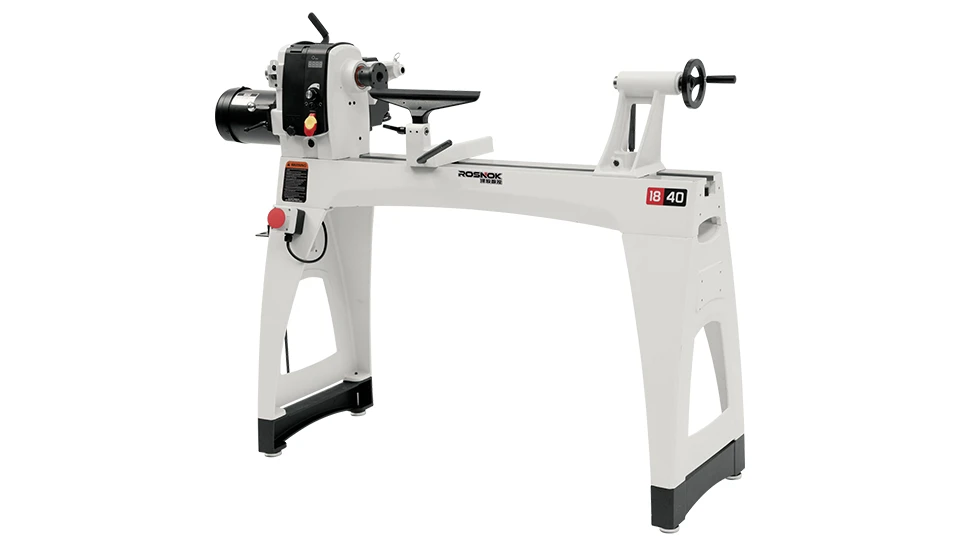
How Does a Wood Lathe Work?
Understanding how a wood lathe works is the key to unlocking its full creative potential. In this section, we’ll walk through its working principle and break down each step of the woodturning process—from setup to finishing. Whether you’re curious about spindle speed, tool placement, or cutting technique, this part has you covered.
The Basic Principle of Operation
The working principle of a wood lathe is built around one core idea: the wood spins, and the tool stays still. Imagine a spinning bicycle wheel and holding a knife gently against its edge. In essence, that’s how a wood lathe works.
When powered on, the machine rotates the wood blank horizontally between two fixed points—the headstock and tailstock. As the spindle turns, the operator holds a cutting tool, such as a gouge or skew chisel, against the rotating surface. Instead of the tool moving through the material like in a saw, here the material moves toward the tool. This creates smooth, symmetrical shapes with controlled, continuous cuts.
Because the spindle speed can be adjusted, you can fine-tune how fast the wood turns depending on its size, hardness, and the type of operation. For example, rough shaping may use slower speeds, while finishing cuts often need higher RPMs for smoother surfaces.
This “rotating material, fixed tool” method is what makes the wood lathe unique among woodworking machines. It allows for a high degree of precision and balance, which is difficult to achieve with handheld tools alone.
The Woodturning Process Step-by-Step
Using a wood lathe involves a step-by-step process. Here’s how a typical woodturning operation unfolds, especially for beginners:
- Select and Prepare the Wood
Choose a straight, dry wood blank suitable for turning. Mark the center points on each end to align it on the lathe. - Mount the Workpiece
Secure the wood between the headstock spindle (often with a chuck or faceplate) and the tailstock center. Tighten both ends until the wood is firmly supported. - Adjust the Tool Rest
Position the tool rest close to the workpiece, just below its centerline. This ensures stability and control when applying your cutting tool. - Set the Spindle Speed
Use the speed control knob or pulley system to adjust the RPM. Lower speeds are safer for rough shaping or larger pieces; higher speeds work well for smoothing or detailing. - Begin Cutting
Start the lathe and slowly bring the tool to the spinning wood. Move the tool sideways along the tool rest to shape the profile gradually. - Sand the Surface
With the lathe still running, use progressively finer sandpaper to smooth the turned surface. Always keep your hands clear and move smoothly. - Finishing Touches
Apply wax, oil, or another finish while the wood spins slowly. This adds both protection and polish to the final piece.
Throughout each step, maintaining safety, control, and consistent tool pressure is key. Practice builds confidence, and understanding how a wood lathe works—from start to finish—gives beginners a clear path toward mastering woodturning.
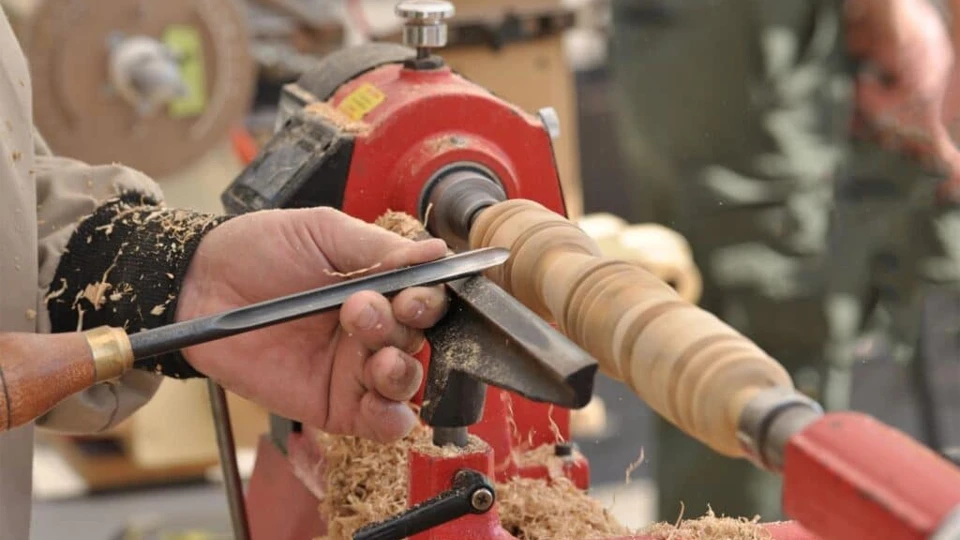
Main Components of a Wood Lathe
Before using a wood lathe effectively, it’s crucial to understand its main components. Each part plays a specific role in ensuring the machine operates safely, smoothly, and accurately. Whether you’re a beginner learning the basics or someone comparing models before buying, knowing these components will help you better assess functionality and performance.
Headstock and Spindle
The headstock is the power hub of the wood lathe. It houses the motor, pulleys or gears, and the spindle—the rotating shaft that holds one end of the workpiece. The motor drives the spindle to rotate at adjustable speeds, which is essential for cutting different types of wood and shapes.
Some lathes use belt-driven systems for quiet, affordable operation, while others use gear-driven headstocks that offer more torque and are better for heavy-duty projects. The spindle may have a thread or taper to accept accessories like faceplates or chucks, depending on your turning needs.
Tailstock and Quill
Positioned at the opposite end of the headstock, the tailstock provides adjustable support for longer or unbalanced workpieces. It slides along the lathe bed and can be locked into place. Inside the tailstock is a quill—a hollow shaft that extends to press a center into the wood, stabilizing it during turning.
Many tailstocks also accommodate drill chucks or boring tools, allowing for accurate center-hole drilling. Adjustment is usually made with a handwheel, offering both precision and ease of use.
Tool Rest and Banjo
The tool rest is where you position your cutting tools during turning. It’s a smooth horizontal bar that supports the tool, helping you maintain control and reduce vibration. The rest is held by a movable arm called the banjo, which slides along the lathe bed and can be clamped securely into place.
The height and angle of the tool rest can be adjusted to suit different cutting positions and techniques. A well-positioned tool rest enhances accuracy and ensures safer operation, especially for beginners still developing muscle memory and control.
Lathe Bed and Base
The lathe bed is the long, flat rail that all other components slide along and align with. It determines the overall length of wood you can turn and is critical for maintaining alignment between the headstock and tailstock.
A solid base—often cast iron or heavy-duty steel—ensures vibration-free performance and structural stability. Cast iron beds are heavier and better at absorbing vibration, making them ideal for precision work. In contrast, steel frames may be lighter and easier to transport but may compromise a bit on stability for large projects.
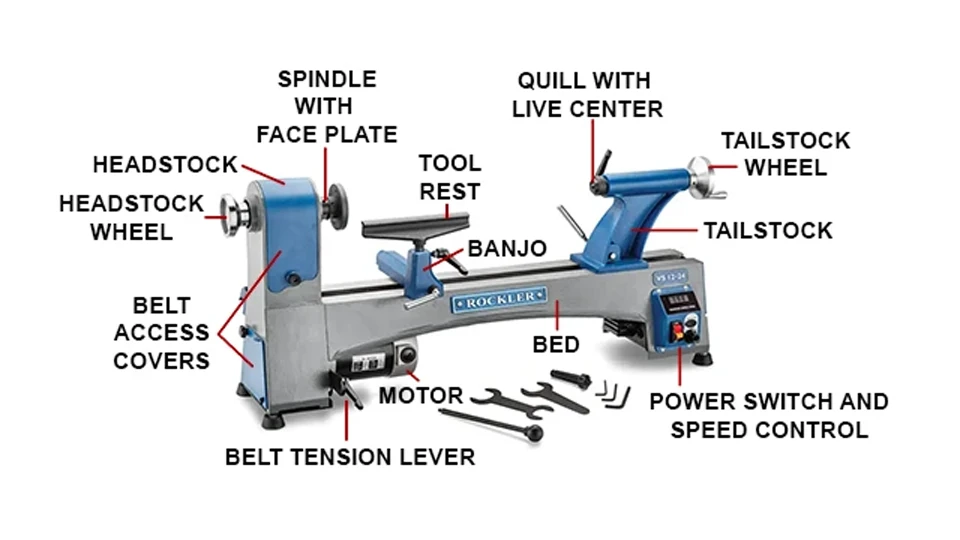
Types of Wood Lathes
Not all wood lathes are created equal. Choosing the right type depends on your skill level, available workspace, and the size of your intended projects. Below are the most common categories, each suited for different users—from absolute beginners to full-scale professionals.
Mini / Benchtop Lathes
Mini wood lathes, also called benchtop lathes, are compact machines ideal for small-scale projects like pens, bottle stoppers, and miniature bowls. These models are lightweight and portable, often mounted on workbenches or small stands, making them perfect for beginners or hobbyists with limited space.
Despite their size, many mini lathes offer variable speed control and solid construction. Look for models with a spindle swing of 6 to 10 inches and a distance between centers ranging from 12 to 18 inches. Popular beginner-friendly brands include Jet, WEN, and Rikon, which balance affordability and reliable performance for entry-level use.
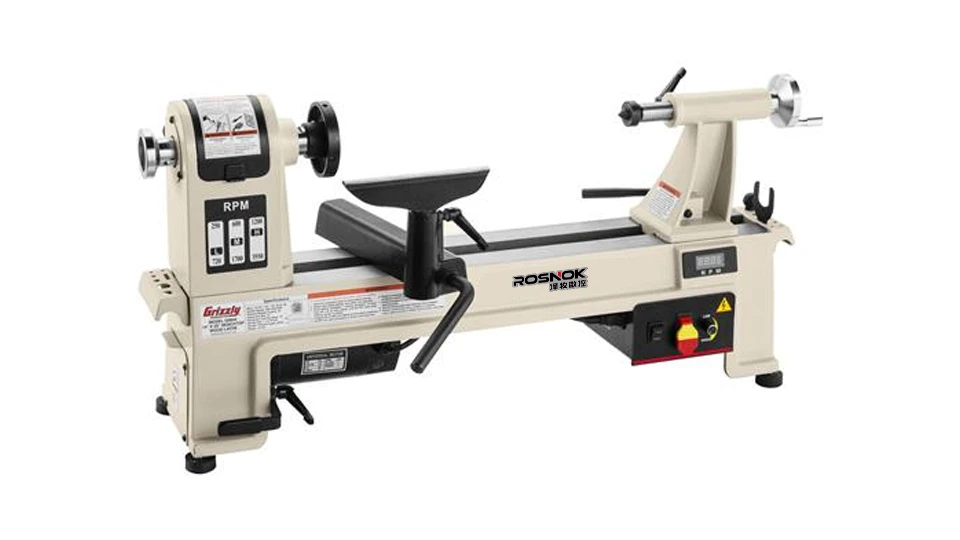
Midi Lathes
Midi lathes strike a balance between size and power. These machines are larger than mini lathes but still manageable for garage or basement workshops. They typically support medium-sized projects such as bowls up to 12 inches in diameter, vases, or chair legs.
With more robust motors and increased torque, midi lathes allow for longer sessions and denser wood types. Users with some turning experience or those who expect to upgrade from small to moderate workpieces often find midi lathes a perfect match. Many models also support extension beds, giving you added flexibility as your skills grow.
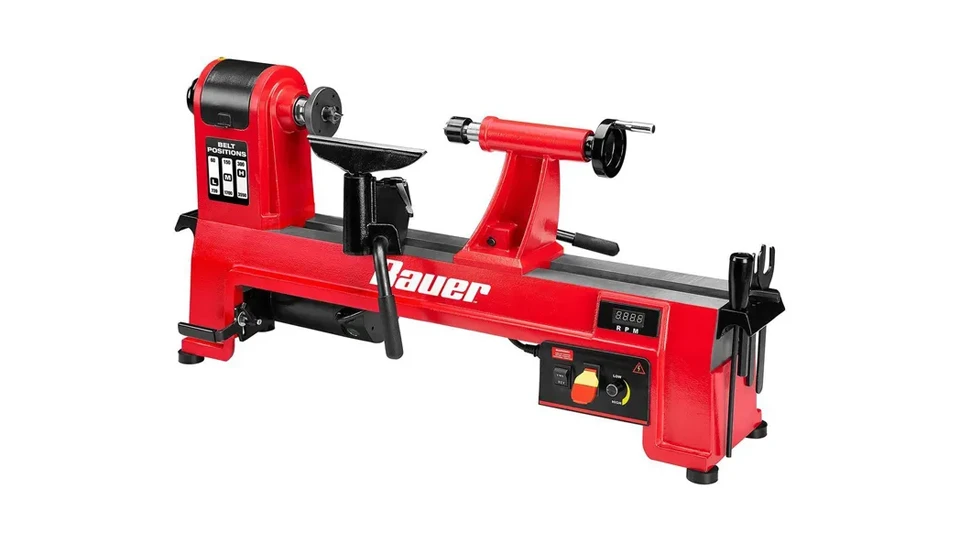
Full-Size Lathes
Full-size wood lathes are professional-grade machines built for large-scale work and long-term durability. These lathes offer extended bed lengths, powerful motors (often 1–2 HP or more), and advanced features like electronic variable speed control.
Commonly used in furniture making, sculpture, or custom woodworking studios, full-size lathes can handle large bowls, table legs, and complex architectural pieces. However, they require significant floor space and a stable surface. We recommend these models only for serious woodturners or production-focused workshops with the room and budget to accommodate them.
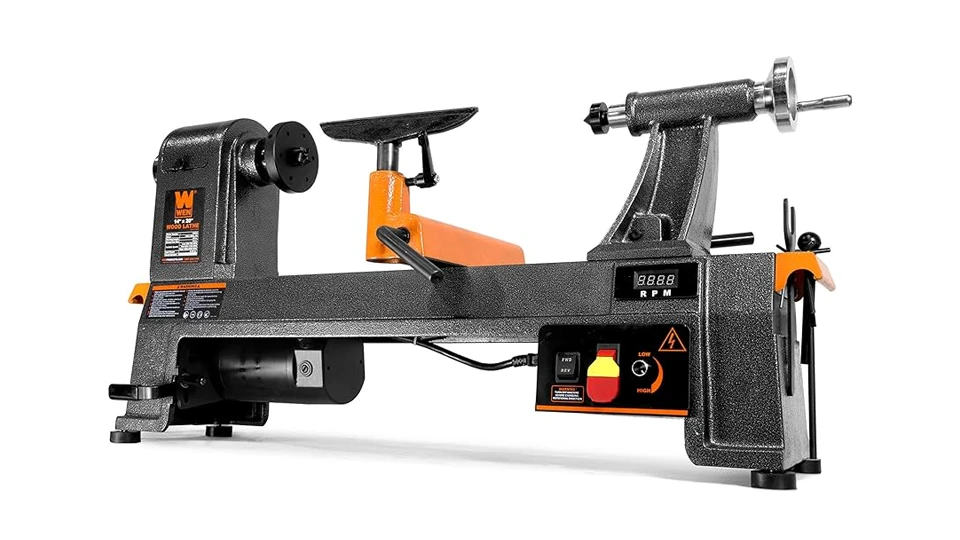
CNC Wood Lathes (for reference)
Unlike traditional manual lathes, CNC wood lathes (Computer Numerical Control) automate the cutting process using pre-programmed digital instructions. These machines are designed for precision, speed, and consistency in large-volume production.
Used mainly in industrial or commercial woodworking environments, CNC lathes eliminate the need for hand tools and manual adjustments. Instead, operators design the shape via CAD software, and the machine handles the rest. While not typically used by hobbyists, understanding the existence and function of CNC wood lathes gives you a broader perspective on what modern woodworking technology can achieve.
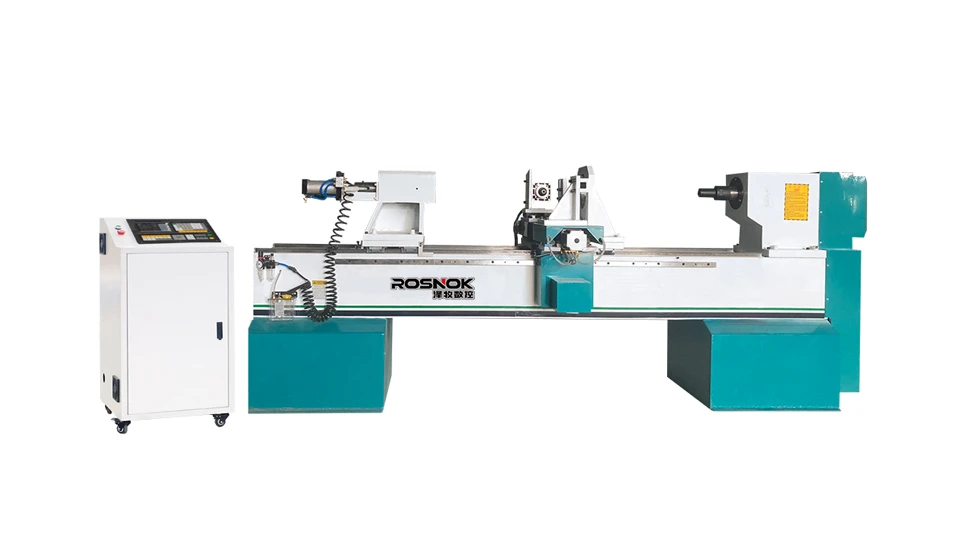
What Can You Make with a Wood Lathe?
Wood lathes open the door to an enormous range of creative and functional woodworking projects. Whether you’re just beginning or looking to take your skills further, understanding what you can make with a wood lathe helps set realistic goals and sparks inspiration. From decorative pieces to highly practical objects, lathe turning brings both artistry and precision to life.
Decorative Projects for Beginners
If you’re new to woodturning, starting with small decorative projects is both satisfying and low-risk. A simple wooden bowl is often the first item beginners attempt. It teaches key techniques like smooth tool movement, managing spindle speed, and using the tool rest effectively. Other beginner-friendly items include bottle stoppers, small vases, spinning tops, and ring holders. These projects typically require minimal material—scrap hardwood or softwood blocks work just fine—and can often be completed in under an hour.
For best results, opt for softer woods like maple, cherry, or walnut. These species offer clean cuts and predictable grain behavior, reducing frustration during early practice. As you gain confidence, you can explore more detailed embellishments such as beading or grooves. These decorative lathe projects help build coordination and muscle memory—essential for more complex turning down the road.
Functional Household Items
A wood lathe also allows you to create practical objects that are as useful as they are beautiful. Table legs, candle holders, rolling pins, and spoons are common examples of spindle-turned items that serve daily purposes. Because these items require consistency and symmetry, they also challenge your control and precision—skills that move you from beginner to intermediate.
Projects like chair spindles or stair balusters often demand a full-sized or midi lathe with a longer bed length and higher horsepower. You’ll also need to pay close attention to center alignment and speed variation to avoid chatter or uneven surfaces. Using calipers to check dimensions and making use of a duplicator tool (if available) ensures accuracy when producing identical pieces.
For these types of woodturning projects, moderately hard woods like ash, birch, or beech are recommended due to their durability and surface finish quality. These functional items not only refine your technical skillset but also give you tangible results you can use or gift.
Advanced Artistic Creations
Once you’re comfortable with the tools and techniques, woodturning becomes a medium for artistic expression. Advanced wood lathe users often explore segmented turning—joining multiple wood species into a single blank to create complex color patterns. You can craft hollow forms, multi-axis sculptures, and intricately carved vases that push the boundaries of geometry and texture.
These artistic creations typically require both patience and planning. You’ll need to understand wood grain direction, wall thickness control, and sometimes even make your own custom jigs. Lathe accessories like hollowing tools, specialty scrapers, or carbide-tipped chisels often come into play here. A powerful variable-speed lathe is a must to safely handle off-balance blanks and maintain stability throughout the shaping process.
This stage of woodturning combines engineering precision with sculptural creativity—perfect for turning your workshop into a design studio.
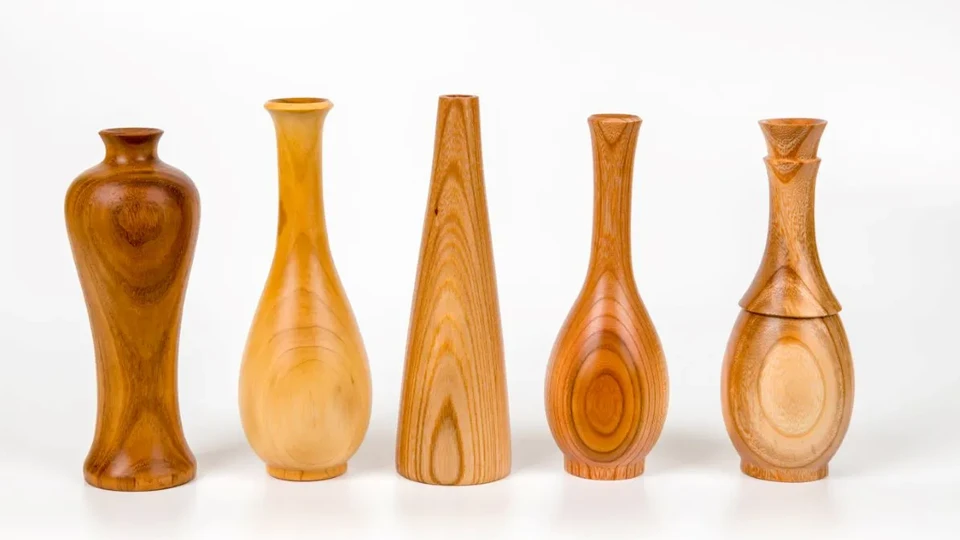
Benefits of Using a Wood Lathe
Wood lathes offer a range of practical and creative benefits that set them apart from other woodworking tools. Their ability to deliver speed, precision, and versatility makes them a valuable asset for both hobbyists and professionals. Whether you’re producing decorative pieces or functional parts, the advantages of a wood lathe can significantly improve your workflow and expand your design potential.
Efficient Material Removal
One of the most noticeable advantages of a wood lathe is its ability to remove material quickly and efficiently. Unlike hand carving, which demands time-consuming and repetitive movements, a wood lathe rotates the workpiece at adjustable speeds, allowing tools to shave off wood with minimal effort. This continuous rotation enables a faster shaping process and ensures smooth, even surfaces from the outset.
For example, roughing down a square blank into a cylindrical form—an otherwise tedious manual task—can be completed in minutes. This makes the lathe an ideal tool when managing tight project deadlines or producing multiple identical components. With proper setup and technique, you can significantly reduce the time required for initial shaping, freeing up more time for detailing and finishing.
High Precision and Symmetry
Because a wood lathe operates with constant rotational motion, it naturally produces symmetrical shapes. This is crucial when crafting items like table legs, chair spindles, or balusters, where uniformity matters. The lathe holds the wood securely between the headstock and tailstock, maintaining alignment while you shape the material using handheld tools.
The use of a tool rest allows consistent pressure and cutting angle, helping maintain dimensional accuracy throughout the process. When combined with measuring tools like calipers and marking gauges, the lathe enables a level of repeatability that’s hard to achieve with hand tools alone. This makes it especially useful in small-scale production environments or furniture restoration projects where identical parts are essential.
Creative Possibilities for Beginners
While precision is a major advantage, the wood lathe also offers beginners a creative playground. Even with limited experience, users can quickly begin experimenting with different shapes, contours, and surface textures. The dynamic interaction between spinning wood and cutting tools opens up endless design opportunities—curves, beads, coves, and more.
You’re not limited to a specific form or function. You can turn a simple spindle one day and try your hand at a decorative goblet the next. This low barrier to entry makes the lathe a powerful tool for developing woodworking confidence. Additionally, switching between different wood species—each with its own color, grain, and hardness—adds variety to your learning experience and results in more expressive finished pieces.
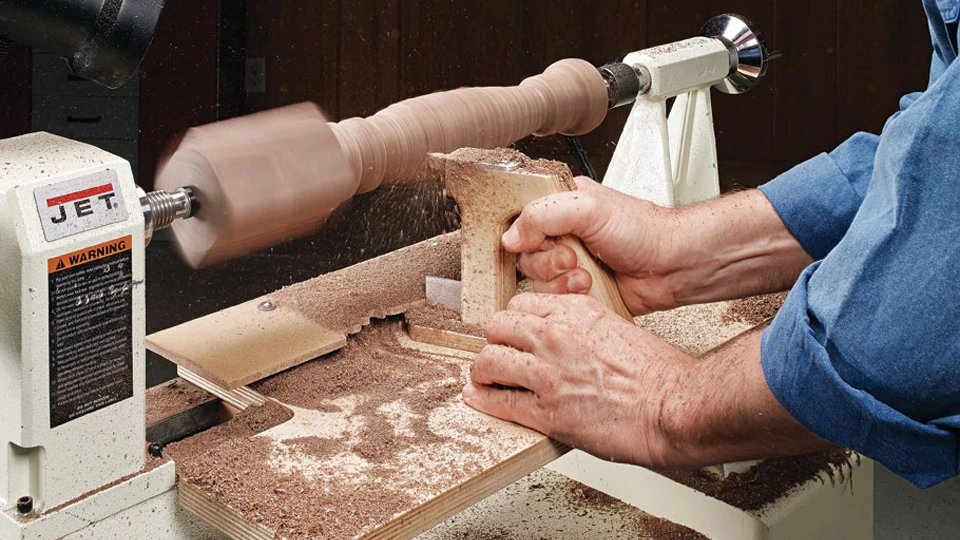
Limitations of a Wood Lathe
While wood lathes offer many advantages, they also come with certain limitations that are important to understand—especially for beginners. Knowing what a wood lathe can’t do helps set realistic expectations and ensures safer, more efficient learning as you explore woodturning.
Restricted to Round or Symmetrical Workpieces
Due to its rotational design, a wood lathe is inherently limited to producing round or axis-symmetrical objects. This means it’s ideal for bowls, dowels, or spindles—but not suitable for flat panels, square components, or asymmetrical sculptures. If your project involves sharp corners, irregular outlines, or carved patterns across flat surfaces, other woodworking machines like routers, scroll saws, or carving tools are better suited.
This doesn’t mean the lathe lacks versatility—it just means you need to match the tool to the task. Understanding the wood lathe’s working principle helps clarify its appropriate use cases and avoid unrealistic expectations in your project planning.
Manual Skill Requirements
Despite being a powered machine, the wood lathe relies heavily on manual input. You control the cutting tools by hand, guiding their angle, depth, and pressure as the workpiece spins. This requires good coordination between your hands and eyes, steady posture, and an understanding of tool positioning.
A moment of hesitation or incorrect angle can lead to tool catches, tear-out, or even safety risks. That’s why many woodturners emphasize the importance of body mechanics, grip technique, and continuous practice. The machine won’t correct mistakes automatically—your technique directly shapes the final product.
Learning Curve for New Users
For those new to woodworking or machining in general, the wood lathe comes with an initial learning curve. While basic turning can be learned quickly, mastering safe and effective technique takes time. Beginners need to become familiar with how different chisels behave, how to read wood grain direction, and how to adjust spindle speed for each type of wood or project.
Moreover, proper setup—including securing the workpiece between the headstock and tailstock, adjusting the tool rest height, and positioning your body—is critical. Ignoring these foundations can lead to poor results or unsafe conditions. Fortunately, with patience and the right instruction, most users find this learning curve both manageable and rewarding.

Benefits of Using a Wood Lathe
Wood lathes offer a range of practical and creative benefits that set them apart from other woodworking tools. Their ability to deliver speed, precision, and versatility makes them a valuable asset for both hobbyists and professionals. Whether you’re producing decorative pieces or functional parts, the advantages of a wood lathe can significantly improve your workflow and expand your design potential.
Efficient Material Removal
One of the most noticeable advantages of a wood lathe is its ability to remove material quickly and efficiently. Unlike hand carving, which demands time-consuming and repetitive movements, a wood lathe rotates the workpiece at adjustable speeds, allowing tools to shave off wood with minimal effort. This continuous rotation enables a faster shaping process and ensures smooth, even surfaces from the outset.
For example, roughing down a square blank into a cylindrical form—an otherwise tedious manual task—can be completed in minutes. This makes the lathe an ideal tool when managing tight project deadlines or producing multiple identical components. With proper setup and technique, you can significantly reduce the time required for initial shaping, freeing up more time for detailing and finishing. Once you get the hang of it, you’ll be amazed how fast things take shape.
High Precision and Symmetry
Because a wood lathe operates with constant rotational motion, it naturally produces symmetrical shapes. This is crucial when crafting items like table legs, chair spindles, or balusters, where uniformity matters. The lathe holds the wood securely between the headstock and tailstock, maintaining alignment while you shape the material using handheld tools.
The use of a tool rest allows consistent pressure and cutting angle, helping maintain dimensional accuracy throughout the process. When combined with measuring tools like calipers and marking gauges, the lathe enables a level of repeatability that’s hard to achieve with hand tools alone. This makes it especially useful in small-scale production environments or furniture restoration projects where identical parts are essential.
Creative Possibilities for Beginners
While precision is a major advantage, the wood lathe also offers beginners a creative playground. Even with limited experience, users can quickly begin experimenting with different shapes, contours, and surface textures. The dynamic interaction between spinning wood and cutting tools opens up endless design opportunities—curves, beads, coves, and more.
You’re not limited to a specific form or function. You can turn a simple spindle one day and try your hand at a decorative goblet the next. This low barrier to entry makes the lathe a powerful tool for developing woodworking confidence. Additionally, switching between different wood species—each with its own color, grain, and hardness—adds variety to your learning experience and results in more expressive finished pieces.
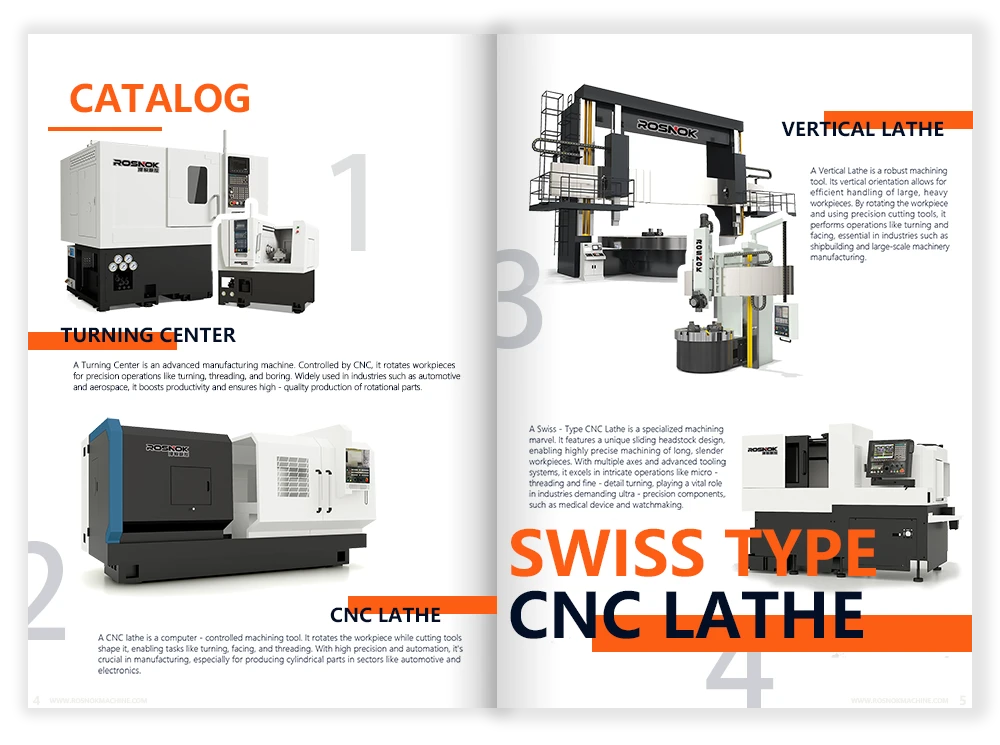
Maintenance and Care for Your Wood Lathe
Like any precision tool, a wood lathe needs regular care to maintain its performance and safety. Proper maintenance extends the machine’s lifespan, ensures smoother operation, and prevents issues like wobbling, noise, or uneven cuts. Here’s how to keep your lathe in top shape with daily, weekly, and occasional maintenance routines.
Daily Cleaning and Dust Removal
After each use, it’s important to remove all wood chips and dust from your lathe. Fine sawdust can accumulate around moving parts and eventually affect performance. Start by brushing off the lathe bed and carriage rails using a soft-bristle brush or compressed air. Wipe down all exposed surfaces with a clean, dry cloth to prevent rust buildup, especially on the ways and tool rest.
Pay special attention to the spindle nose and motor vents—clogging in these areas can cause overheating or power loss. Empty any chip trays or dust collectors if you’re using one. It’s a good idea to check the tool rest and banjo for resin buildup or pitch from hardwoods, which can interfere with tool movement if left unattended.
Lubrication and Belt Tension Checks
Lubricating your wood lathe is essential for keeping all moving parts running smoothly. Use a light machine oil or grease recommended by your manufacturer to lubricate key areas, including the spindle bearings, tailstock quill, and tool rest locking mechanisms. Wipe off any excess oil to avoid attracting dust.
Check the drive belt tension regularly—ideally every few days if you’re turning frequently. A belt that’s too loose may slip and cause uneven rotation, while an overtightened belt can strain the motor. Most lathes offer a simple tensioning adjustment via a sliding motor mount or tensioning lever. A properly tensioned belt should deflect slightly when pressed with moderate pressure.
You may also want to inspect for signs of wear like cracks or fraying. Replacing a worn belt before it fails completely will save you downtime and frustration later on.
Tool and Accessory Maintenance
Sharp tools are not just about clean cuts—they’re also safer to use. Check your chisels, gouges, and parting tools after every few projects. Sharpen them with a bench grinder or sharpening jig when you notice resistance during cutting. Dull tools increase friction and can lead to tool catches, especially at higher speeds.
Inspect all accessory mounting points such as chuck jaws, tool rest clamps, and tailstock locking levers. Loose hardware can introduce vibration or misalignment during turning. Also, clean any buildup from the Morse taper connections between your accessories and spindle/tailstock to ensure a secure grip.
Lastly, don’t forget to check electrical components. Blow out dust from around the motor casing and inspect cords and switches for any wear. A quick five-minute check after each use can prevent much bigger issues down the line.
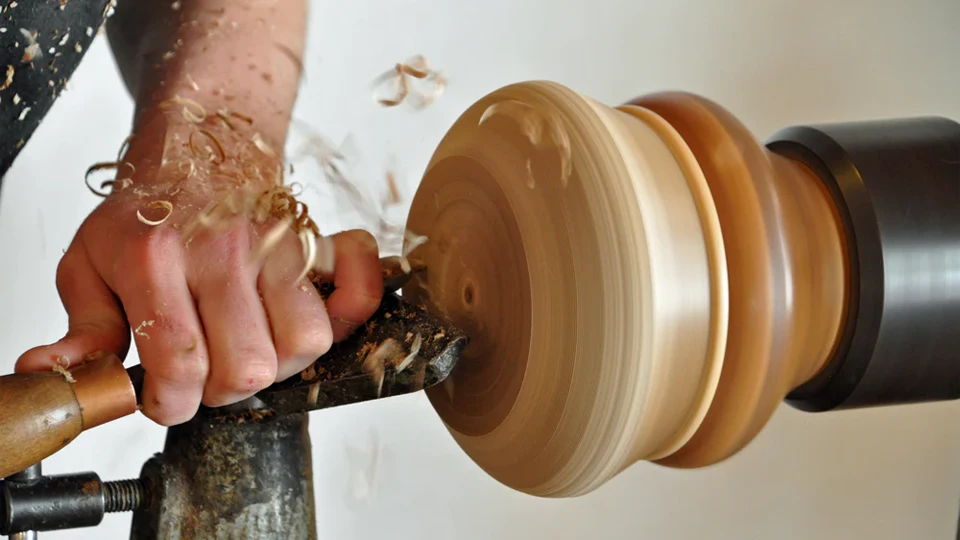
FAQs About Wood Lathes
Wood lathes often raise a lot of questions for beginners—from safety and costs to material choices and learning resources. This section answers some of the most common concerns to help you make smarter decisions and enjoy a smoother start with woodturning.
Can Beginners Use a Wood Lathe Safely?
Yes, beginners can absolutely use a wood lathe safely—provided they follow basic safety guidelines and start with the right equipment. Look for models designed for novice users, which often include variable speed control, a stable base, and easy-to-adjust components. Start with smaller projects and always wear protective gear like goggles and a dust mask. Learning to maintain proper tool contact and posture will also go a long way in preventing accidents.
How Much Does a Good Wood Lathe Cost?
The price of a wood lathe can range widely depending on size, power, and features. Entry-level mini lathes start around $200–$400 and are great for small projects like pens or bowls. Midi lathes, suitable for intermediate users, typically fall in the $500–$1,200 range. Full-sized or professional lathes can exceed $2,000. While budget matters, consider long-term value: a slightly more expensive lathe with better build quality and support will pay off in the long run.
Can I Turn Hardwood on a Wood Lathe?
Yes, a wood lathe can handle both hardwoods and softwoods—but the turning experience varies. Hardwoods like oak, maple, and walnut offer beautiful finishes and durability but require sharper tools, slower speeds, and more precise control. For beginners, it’s better to start with softwoods such as pine or poplar. They’re more forgiving and allow you to focus on technique rather than tool resistance. As your confidence grows, transitioning to hardwoods becomes easier.
Are There Free Learning Resources for Woodturning?
Absolutely. There are many beginner-friendly learning resources available online. YouTube channels like Woodturning Basics and Turning With Sam offer step-by-step tutorials. Forums like LumberJocks and Reddit’s r/woodturning provide advice and feedback from experienced users. Some tool manufacturers also offer free downloadable guides or live demos. Don’t overlook local maker spaces or community college workshops—they often host free or low-cost woodturning classes for beginners.
How Long Does It Take to Get Good at Woodturning?
It depends on your dedication, practice frequency, and the types of projects you take on. Many beginners feel confident with basic spindle turning after a few weekends of practice. Complex techniques like bowl turning or hollow forms can take several months to master. Using quality tools, learning proper sharpening techniques, and reviewing your own progress can help accelerate your learning. Once you get the hang of it, you’ll be amazed how fast things take shape.
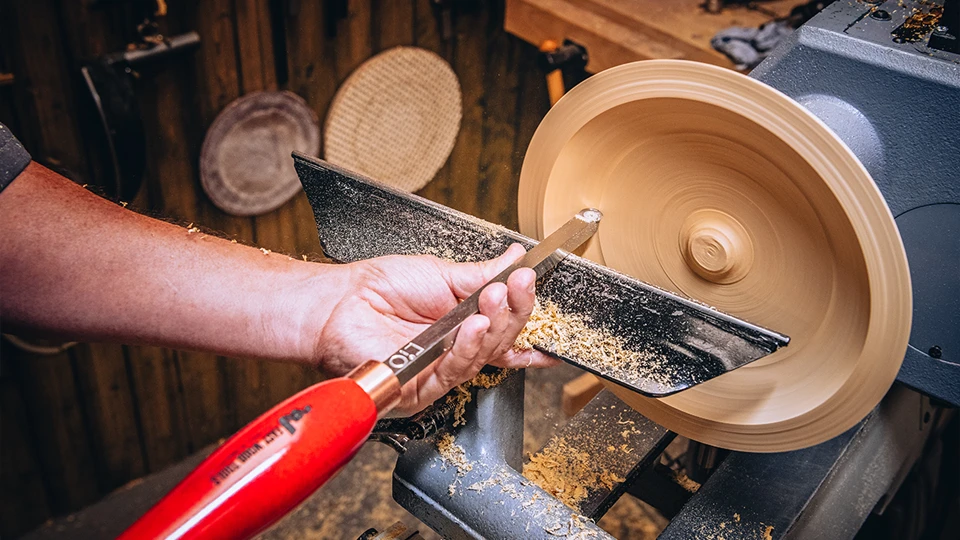
Conclusion
Wood lathes play a vital role in shaping symmetrical wooden objects with precision, efficiency, and creativity. In this guide, we’ve broken down what a wood lathe is, how it functions through rotation and handheld cutting tools, and what its main components are—from headstock to tool rest. We explored the different types of lathes for beginners and professionals, highlighted common projects from decorative bowls to table legs, and explained both the benefits and limitations of this machine. With practical advice on safety, machine selection, and maintenance, this article offers a solid foundation for anyone ready to begin their woodturning journey.
And while wood lathes offer an ideal entry point into the world of turning, those seeking greater precision, repeatability, and industrial efficiency often look to advanced equipment like CNC machines. For manufacturers and workshops aiming to scale production without sacrificing quality, choosing the right machine tool partner is just as critical as selecting the right machine. Brands with deep technical experience in precision machining—like Rosnok—bridge the gap between traditional craftsmanship and automated excellence, offering solutions that range from manual lathes to high-performance CNC systems tailored for wood, metal, and beyond.







